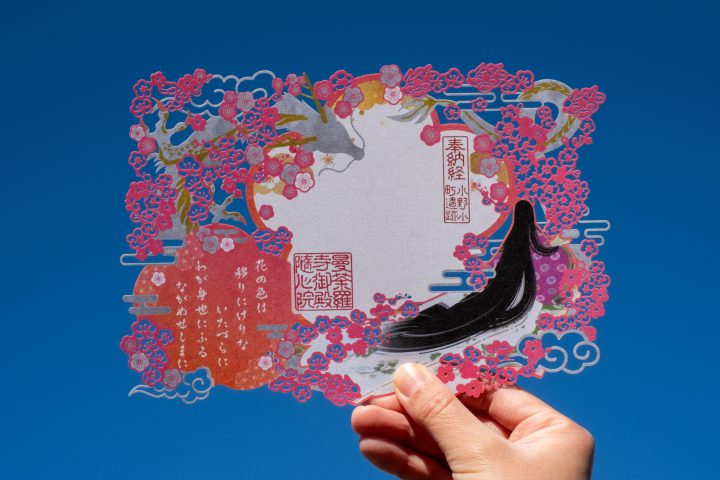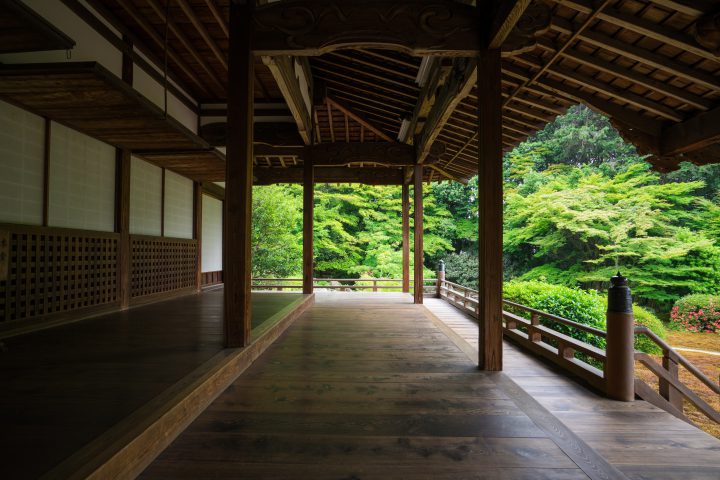
The article “Murasaki Shikibu, Ono no Komachi, and Zuishin-in” mentions Zuishin-in, a historic temple located in the Yamashina Ward of Kyoto. This site, rich in tradition and culture since the Heian period, is also known for its connection to Ono no Komachi. It’s a hidden gem in Kyoto that presents different faces with the seasons. This time, we’ll introduce the charm of Zuishin-in’s spring events and the seasonal special shrine seals.
Where is Zuishin-in located
Zuishin-in is the head temple of the Shingon sect, Zentsuji school, located in Ono-Goryo-cho, Yamashina-ku, Kyoto City. It is close to Ono Station on the subway Tozai Line, just a 5-minute walk away, and is easily accessible from famous tourist spots such as Nijo Castle and Karasuma Oike.
Located on the eastern edge of Kyoto City, Yamashina Ward has served as Kyoto’s eastern gateway from the Lake Biwa area since the Heian period, supporting logistics and playing a very important role politically and economically. This region is a nature-rich suburban area, maintaining a tranquility suitable for training and meditation. Additionally, the Lake Biwa Canal, which supports Kyoto’s water supply, flows through Yamashina and into Kyoto.

The history and ruins of Zuishin-in
Zuishin-in, founded in 991 AD by the high priest Nin’kai, was originally known as Gyuhizan Mandaraji. However, it was renamed Zuishin-in in the late Heian period. During the Kamakura period, after receiving a decree from Emperor Go-Horikawa, it came to be known as “Ono Mandaraji Goten Zuishin-in Monzeki,” establishing its reputation as a temple of high status.
However, following the devastation caused by the Ōnin War, including the burning of its seven main temple buildings, Zuishin-in was revived around 1599, towards the end of the Sengoku period, by influential noble families such as the Nijo and Kujo families. The main hall retains the architectural style of its reconstruction period. Within its precincts, cultural treasures are housed, including the principal deity statue of Nyoirinkanzeon Bosatsu (Cintāmaṇicakra Avalokiteśvara) and a Kongōsatta statue (Vajrasattva), created by Kaikei, a leading sculptor of the Kamakura period.
Additionally, remnants associated with Ono no Komachi, such as “Komachi Buntzuka” (Komachi’s Literary Mound) and “Keshō no Ido” (The Makeup Well), which commemorate the later years of her life, still exist. In 1966, the temple grounds were designated as a historic site under the Cultural Properties Protection Law, highly valuing its historical and cultural significance.
Introduction to Spring Events
The Vibrant “Room of Flowers”
“The Room of Flowers,” held from February 9, 2024 (Friday) to March 21, 2024 (Thursday), captivates visitors with its vibrant fusuma paintings depicting the life of Ono no Komachi, titled “Kisai Color Ume Fragrance Komachi Picture,” along with a beautiful array of flowers that spread across the entire room. The supervision is by Yasutaka Ochi, who runs flower shops in Omotesando Hills and Tokyo Midtown. This year, the “Naked Flower Fortune Telling,” which pairs flowers made of Japanese paper with omikuji (fortune slips), will be available in limited quantities only on weekends and holidays.
A Must-See Scenic Spot in Early Spring: “Ono Plum Grove”
Asking about the flower symbolizing Zuishin-in, you would likely hear “plum” as the response, making the famous “Ono Plum Grove” a must-see. Known for the “Hanezu no Ume,” Ono Plum Grove will be open from March 9, 2024 (Saturday) to March 24, 2024 (Sunday), with an opening commemoration event planned for March 10 (Sunday). “Hanezu no Ume” is a late-blooming plum variety, celebrated for its beautiful flowers and fruits used for eating or decoration. With about 200 plum trees, including Hanezu no Ume, white plum, and red plum, blooming splendidly, why not experience an early spring in this beautiful plum grove?

The “Hanezu Dance” in Remembrance of Ono no Komachi
On March 31, 2024 (Sunday), the “Hanezu Dance” is scheduled to be held for the first time in about four years. It is said that Ono no Komachi, in her later years, would forget her age and enjoy delightful days with the village children when the “Hanezu no Ume” plum trees bloomed. The Hanezu Dance, revived in 1973, commemorates the legend of Ono no Komachi and the courtier Fujiwara no Fukayabu’s “Hundred Nights Courtship” through song and dance. Local children perform the dance, dressing up as Ono no Komachi and Fujiwara no Fukayabu. From the early Edo period to the Taisho period, it was a tradition for local children to go around singing and dancing in front of houses each spring.
Spring Limited Edition Goshuin

This year’s spring Goshuin features Ono no Komachi standing amidst vibrant plum blossoms in a striking red plum color, with a dragon, representing this year’s zodiac, warmly watching over her. Rather than the usual fierce depiction of dragons, this design portrays them in a cute manner, as if they are affectionately drawn to Ono no Komachi.
It was challenging to capture the vibrant yet warm feeling of the dragon’s gray. We not only focused on intricate papercutting but also aimed to create a beautiful Goshuin that embodies the beauty, history, and culture characteristic of Zuishin-in.
We use a traditional Japanese paper called “Shin Torinoko-shi,” which is about the size of A5 and is known for its soft texture and quality. These Goshuin have been available since February 10, Reiwa 6 (2024), but as they are limited-edition items, please be sure not to miss out.

Zuishin-in is a special place where you can feel the beauty of each season and the depth of history. I believe it was a fitting place for Ono no Komachi to spend her later years. This spring, why not come and fully experience the charm of Zuishin-in, spending some peaceful moments there?


